SOCIETY OF THE SNOW (2023)
In the 1970s, a group of young men fight to survive after a plane crash leaves them stranded in the Andes.
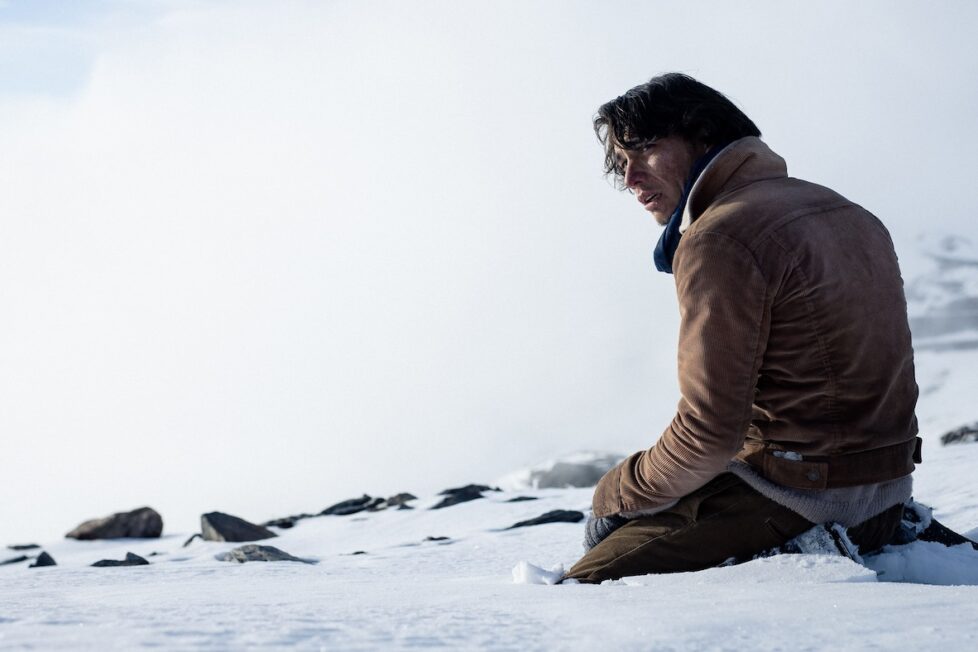
In the 1970s, a group of young men fight to survive after a plane crash leaves them stranded in the Andes.


Nearly two decades after delivering arguably the best cinematic ghost story of the 21st-century with The Orphanage / El Orfanato (2007), Spanish director J.A Bayona returns with Society of the Snow / La sociedad de la nieve). The Orphanage masterfully wielded classic Gothic elements while transcending the genre with a poignant emotional dimension. In his first writing and directing feature, Bayona achieves a similar feat, this time weaving a captivating survival adventure that pushes the conventions of the survival genre.
Naturally, the true story behind Society of the Snow lends itself to such dramatic treatment. The film opens with a voiceover referencing both a tragedy and a miracle, foreshadowing the real-life incident known as the Miracle of the Andes. While widely famous in the 1970s, the tale may be less familiar now, and likely unknown in detail, even though Frank Marshall’s Alive (1993) offered a superficial echo. Still, given the broad awareness of the incident, this review won’t shy away from spoilers in the following paragraphs.
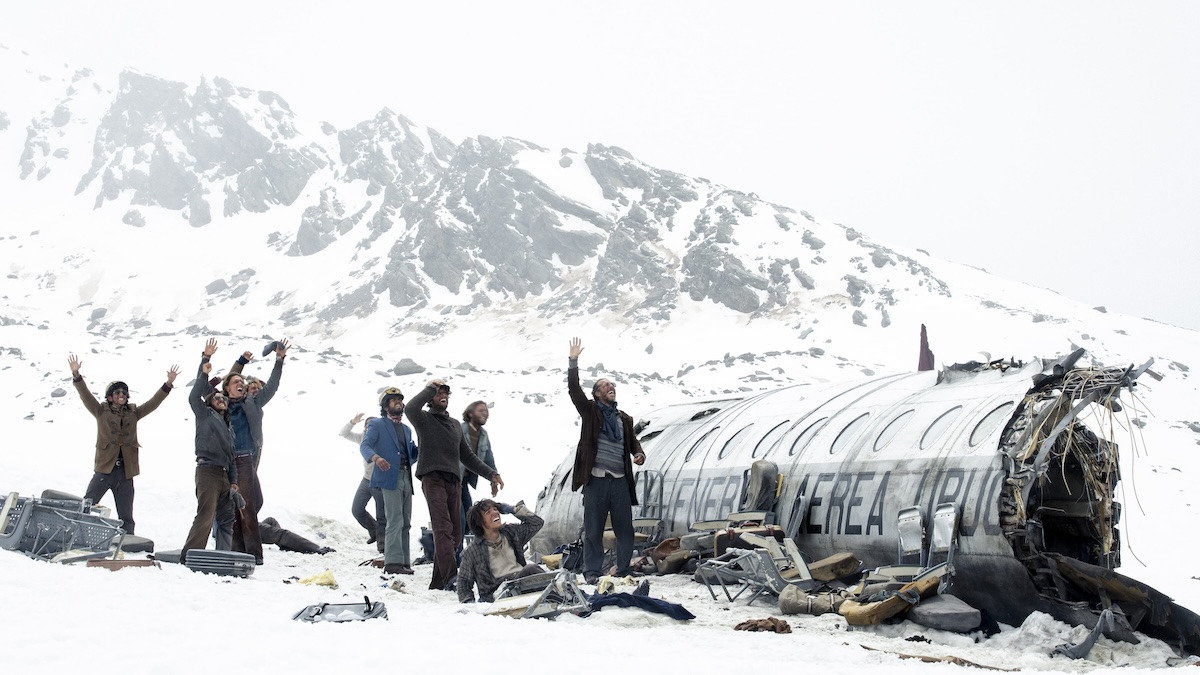
In October 1972, a Uruguayan plane carrying members of a rugby team, their friends, and family members to a match in Chile crashed in the Andes mountain range, exceeding 10,000 feet and far from any human settlement, due to a navigational error. 12 of the 45 passengers and crew perished in the crash, and many of the remaining survivors sustained injuries. Search and rescue flights proved unsuccessful in locating them, and they were ultimately presumed dead. After all, no one had survived any of the 34 previous crashes in the Andes, as noted in Society of the Snow.
Decimated by the crash itself, the survivors—half of whom succumbed to the elements in the following weeks—faced a daunting reality: they were stranded in a harsh, frigid high-altitude environment with only limited supplies salvaged from the wreckage. A week passed, their provisions dwindling, until a grim realisation settled in… to survive, they would have to resort to the unthinkable and eat the bodies of the dead.
After weathering two harsh months under the thawing embrace of a South American spring, two members of the stranded group managed to trek over the mountain barrier into Chile and summon help. Though uncertain of their precise crash location, they held onto the logical faith that the Andes would eventually yield. Swiftly rescued, the remaining survivors found themselves thrust into the glaring spotlight of global attention, their harrowing ordeal granting them celebrity status.
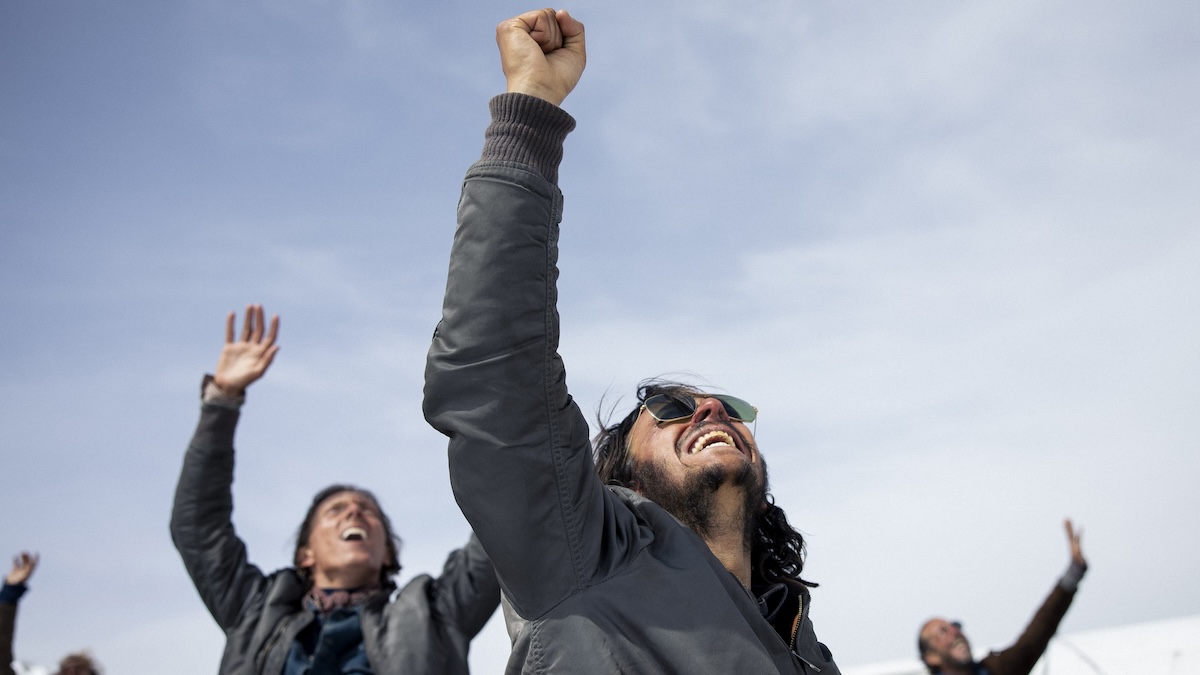
They had overcome extraordinary odds, and as expected, it was the issue of eating human flesh that gave global notoriety to an already remarkable tale. Bayona’s Society of the Snow—like the survivors themselves and the 1993 film—prioritises the will to live over the act of cannibalism. It’s not glossed over, but it’s not the story’s centre or point.
Society of the Snow remains largely faithful to the documented accounts of the survivors, venturing only slightly from reality for cinematic effect. For instance, the helicopter evacuation from the plane’s wreckage was conducted in stages, rather than in a single operation transporting all survivors at once. Similarly, the first human contact Roberto Canessa (Matías Recalt) and Nando Parrado (Agustín Pardella) made upon reaching Chile after their arduous mountain trek wasn’t with a single individual, but with a group of three men.
In any case, Bayona and his co-writers are more interested in the psychological and spiritual aspects of the story than in the practicalities.
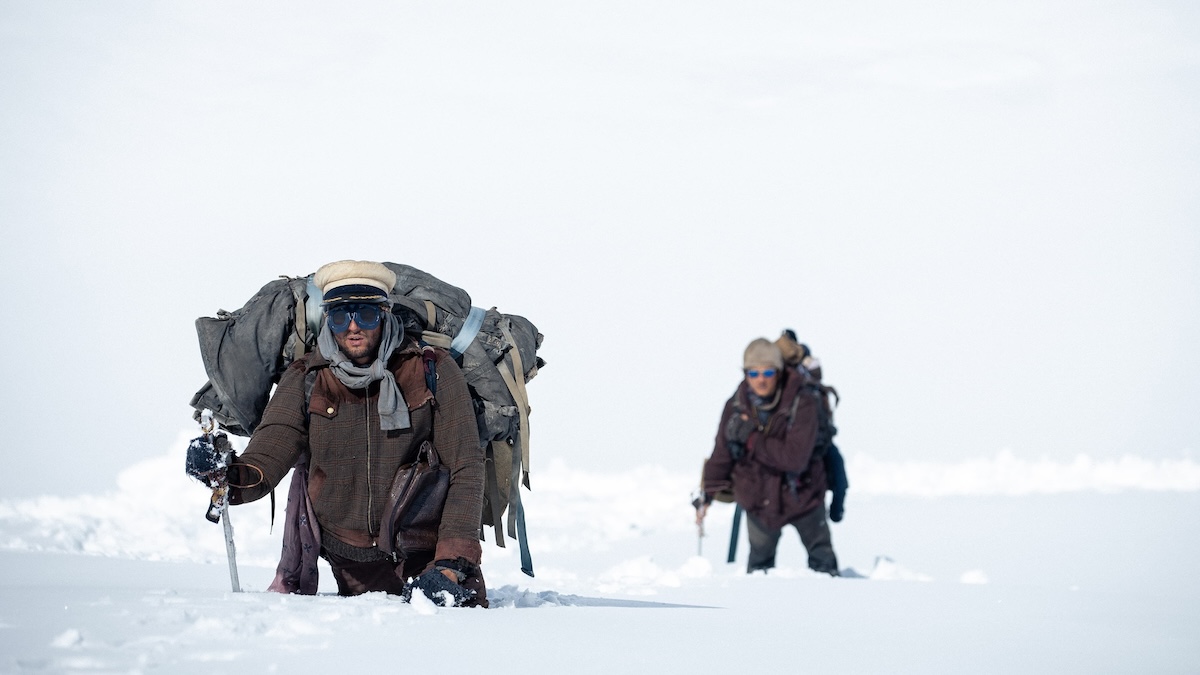
Certainly, Society of the Snow brings the physical realities home vividly: the sight of a small bag holding the few tins and packets of food that they could find, a stark reminder of the survivors’ plight, surpasses any mere words in its impact. The air crash itself is also filmed exceptionally well.
Through the passenger compartment window, glimpses of rock jut into the blizzard, menacingly close to the aircraft. They flash by as ominous as the red lights on the cockpit console, a fleeting premonition of disaster. Then, as the crash arrives, the simmering tension explodes into a brutal ballet of metal and flesh. Rows of seats become battering rams, slamming into each other with a bone-jarring symphony. The soundtrack’s sudden dip into muffled silence amplifies the chaos, the fragmented visuals mirroring the survivors’ descent into dazed bewilderment.
Dominated by men in their teens and twenties, they’re stranded in a desolate landscape described by the intermittent voiceover (mostly belonging to Numa, played by Enzo Vogrincic Roldán) as “a place where life is impossible… out here, we are an anomaly.” The challenges of this anomalous existence are as much mental and emotional as they are physical. “The more we try to escape, the more the mountain resists,” Numa muses, their frustration mirrored by the surreal discovery of a radio in the luggage, announcing the abandonment of the search. Adding to the desolate irony, the same radio later picks up a station playing tango, its music echoing across the empty snowscape.
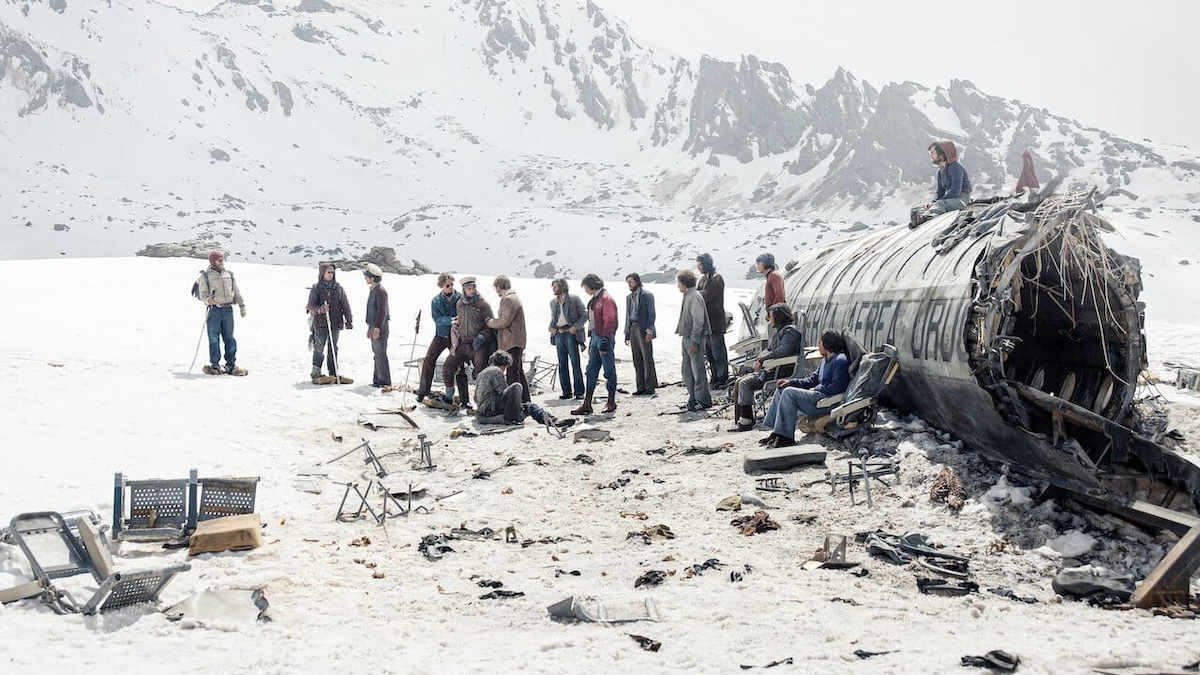
Repairing the other radio, the plane’s two-way communication device, also becomes a source of drama, hope, and disappointment, mirroring the emotional rollercoaster of the group’s weeks in the mountains. Bayona’s film repeatedly reveals the profound significance of seemingly trivial details. For instance, when several young men climb a short distance uphill, the plane vanishes from sight in the snow (meaning rescuers wouldn’t be able to see it). An electric light briefly made to work seems a miracle; so, later, will the first sight of grass. When Nando asks “They seen us?”, referring to the search-and-rescue plane, it’s the absence of an answer that’s striking.
Surprisingly, lighter moments punctuate the film’s stark setting. We see the young men huddled together in the fuselage, crafting terrible but heartfelt rhymes, or imitating bird calls under fair skies. One of Bayona’s major triumphs in Society of the Snow lies in subtly suggesting how the plane crash, though devastating, doesn’t shatter the spirit of the group. The rugby and locker room scenes before the flight, emphasizing camaraderie and teamwork, foreshadow a resilience that persists throughout the film.
So strong that one of the most dramatic human sequences occurs when a risk of the group fracturing appears: the idea of eating the bodies, approached obliquely at first by the survivors, has finally come out into the open. While some initially resisted, led by the unwavering Marcelo Pérez del Castillo (Diego Vegezzi), one by one, their resolve faltered. Each departing figure offered a silent apology to Marcelo as they ventured forth, drawn to the macabre feast awaiting them outside.
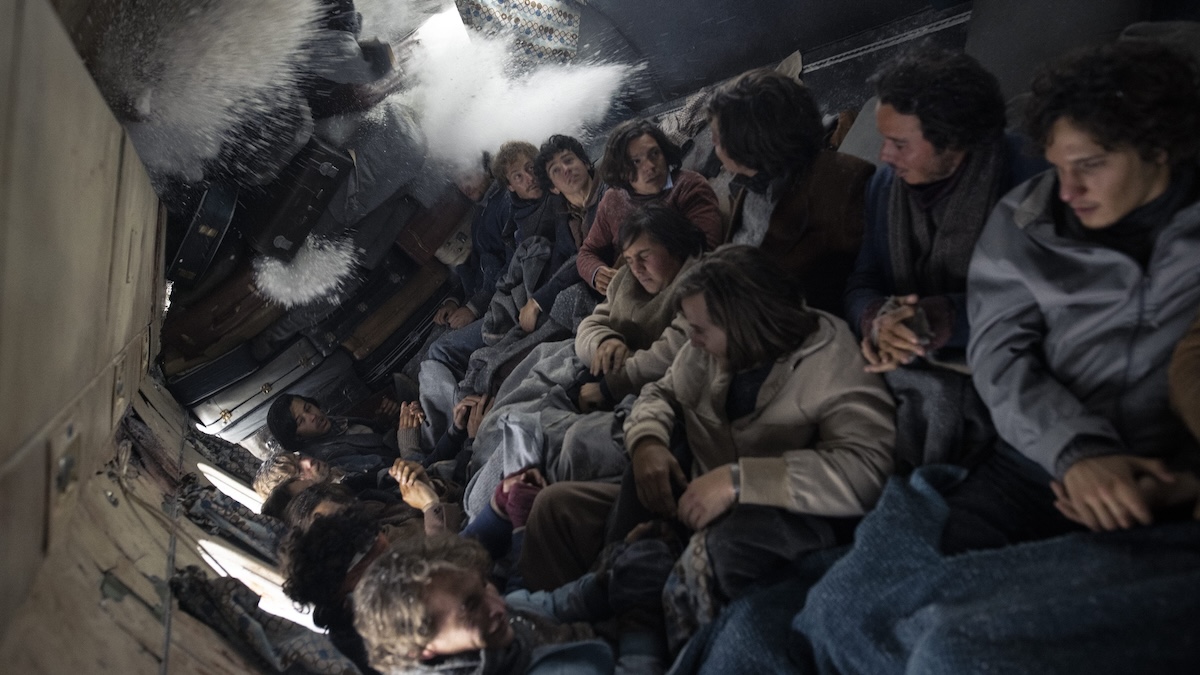
Bayona primarily treats cannibalism as just another facet of the broader narrative. While earlier shots depict the survivors’ meagre rations, they’re juxtaposed with later scenes of desperation, where shoelaces and cigarettes become food substitutes. However, there’s no morbid fascination; the voiceover simply states, “What was once unthinkable became routine.” Even when rescue promises a return to normalcy, and the survivors find the idea of cannibalism repulsive again, Society of the Snow handles this shift in attitude with matter-of-factness.
Society of the Snow emphasises the group over the individual, including the deceased. This film is emphatically not just about the eventual survivors’ triumph. Therefore, few individual performances truly stand out. For much of the film, the characters are not very delineated, and the large ensemble cast allows little screen time for each person. Their relative obscurity as actors further discourages viewers from focusing on specific individuals, although their varying appearances make them distinguishable. While Numa and Nando have somewhat more prominence, along with Canessa (who, with Nando, briefly leaves for help), it would be inaccurate to consider them the sole protagonists.
Bayona’s direction and Pedro Luque’s cinematography strike a fine balance between focusing on individual characters and the broader situation. They achieve this through a diverse visual repertoire, ranging from intense close-ups that draw us into the characters’ experiences to expansive panoramas of the desolate Andes, particularly impactful at the film’s outset as the camera ascends steadily amidst the snow and rocks. While released on Netflix, Society of the Snow is undoubtedly a film that would benefit from cinema viewing. The use of colour and lighting is masterful, contrasting the saturated palette of the pre-crash world with the shadowy, claustrophobic interior of the plane wreckage, both further emphasised by the dazzling whiteness of the mountains (filmed in Spain).
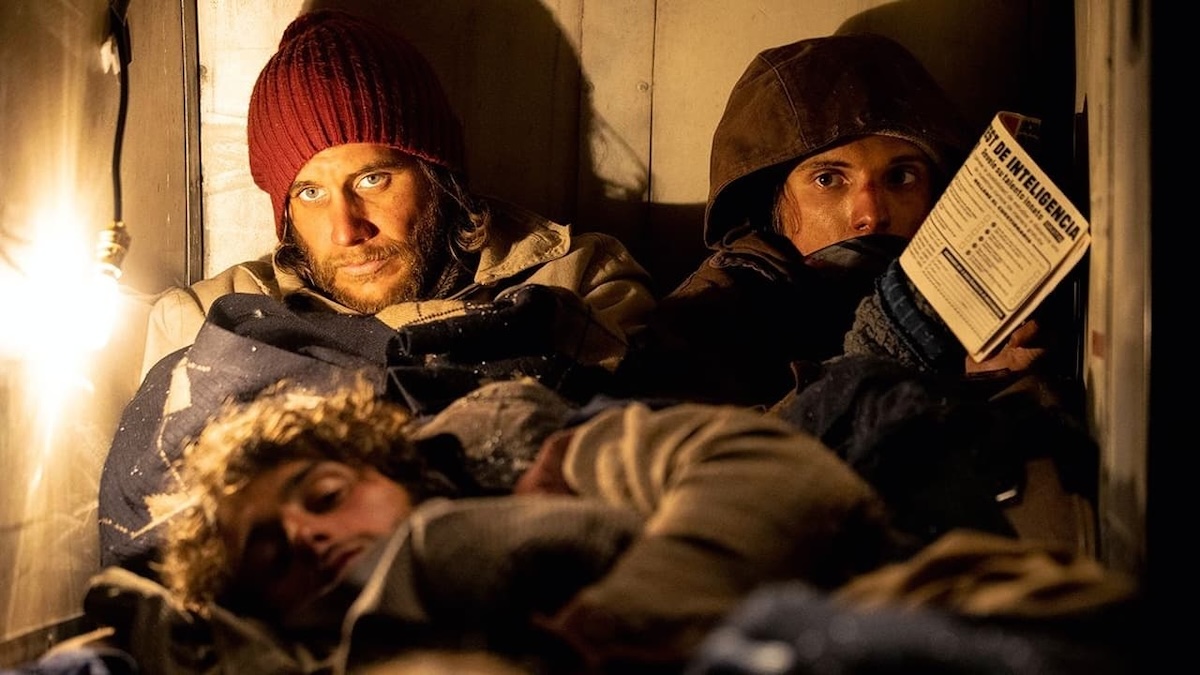
Although Bayona and Luque don’t shy away from high-energy action sequences, such as the dramatic plane crash or the later avalanche’s aftermath, they often favour long, contemplative shots that find beauty even within the ugliest of contexts. The abandoned, ruined plane, left after the survivors’ rescue, emerges not as a blight on the pristine landscape, but rather as a space where something unexpectedly good transpired. They had made this plane home, and we felt it.
All this is supported very effectively by a fine score from Michael Giacchino (an Academy Award-winner for 2009’s Up): suspenseful, austere, but not always gloomy. Dominated by piano and strings, it has its exultant moments too.
As well as Alive there have been several documentaries and a now-forgotten 1976 Mexican narrative film, Survive! / Supervivientes de los Andes, based on the incident. However, it’s the 1993 movie directed by Frank Marshall that Bayona’s new film will inevitably be compared to. Both adhere closely to the documented events, leading to significant similarities. However, structural differences exist. Bayona delves deeper into the survivors’ pre-crash lives, dedicating more time to them than Marshall. Additionally, a larger portion of his film focuses on the harrowing escape from the Andes and the survivors’ readjustment to civilization.
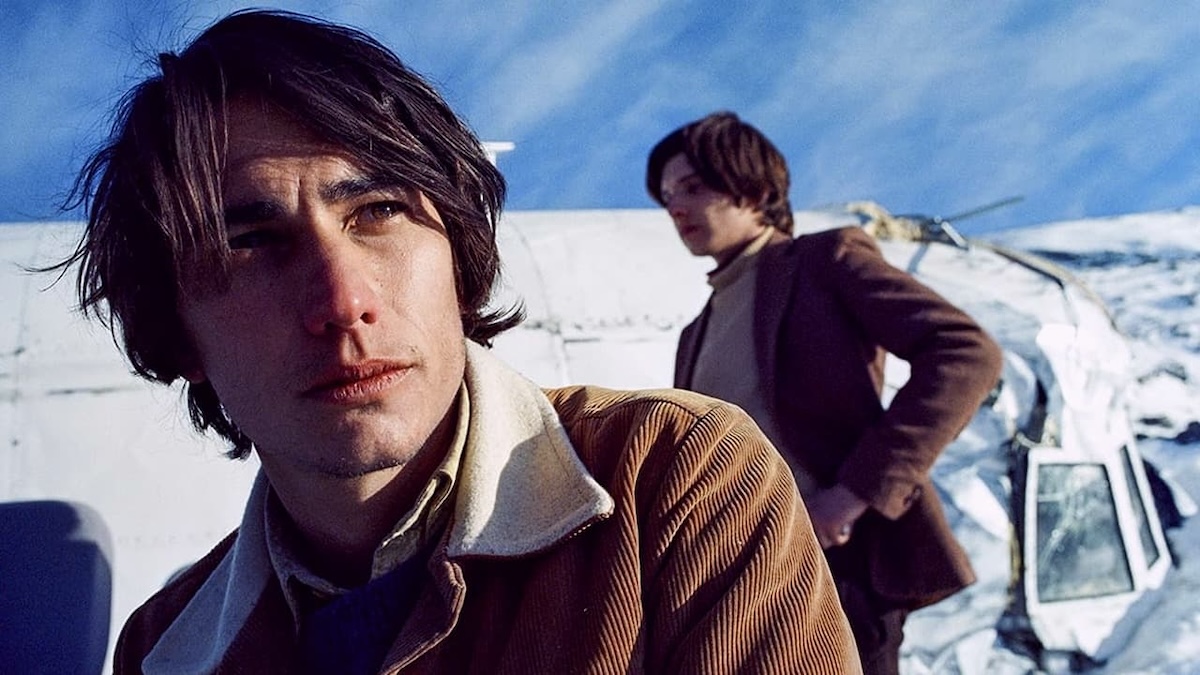
The bigger difference, however, lies in tone. Whereas the 1993 movie was essentially an adventure story, albeit a respectful and non-sensational one, Bayona’s film adopts a more meditative and slow-burning approach. Here, events serve not just as plot points, but as catalysts for the group’s emotional, psychological, and spiritual transformations. The movie avoids offering concrete answers, opting instead to evoke the profound impact of their ordeal. This is encapsulated by the voiceover’s poignant questions: “What happened to us? Who were we on the mountain?”
Like the individuals involved, Society of the Snow approaches its own story with deep reverence. Some even drew parallels between the act of consuming the deceased and the Catholic Eucharist. It’s remarkable that within the entire film, we witness no true dissent or acts of selfishness. This makes Arturo Nogueira’s (Fernando Contigiani García) comment about his god being the group all the more poignant. Certainly, Bayona’s movie demonstrates that stuck on the mountain, they have absolutely nothing but each other.
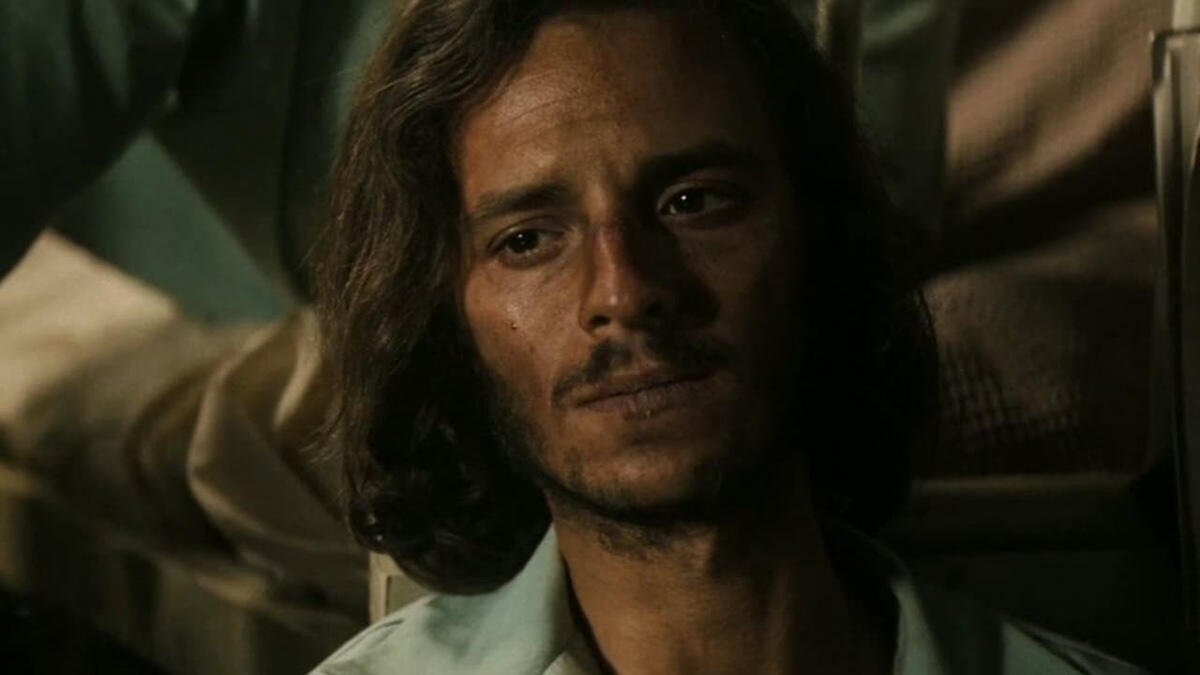
While the rescue itself may seem almost anticlimactic, the true point of Society of the Snow lies not in the mere survival of a few, but in the shared experience of all. This is poignantly captured in the film’s final lines, which contrast “you” and “we”—those who returned to the world and those who perished – suggesting that, regardless of the outcome, their ordeal forged a unity that surpassed normal life.
Society of the Snow is not purely a philosophical essay. Those who are simply interested in the adventure aspects of the tale will find it a gripping (if unhurried) one too, and nobody could fail to be moved by it. Gripping and moving are inherent in the real-life story.
The narrative of Society of the Snow might appear straightforward, but Bayona’s masterful direction, evocative photography, haunting music, and a dedicated cast imbue it with a reflective, even mystical dimension. This seamlessly blends with the surface story, culminating in a film that lingers long after the credits roll. Though you might struggle to pinpoint its essence, you’ll emerge from Society of the Snow with the distinct feeling that it has unlocked something profound, something far beyond mere despair.
SPAIN • CHILE • URUGUAY • USA | 2023 | 144 MINUTES | 2.55:1 | COLOUR | SPANISH

director: J.A Bayona.
writers: J.A Bayona, Bernat Vilaplana, Jaime Marques-Olarreaga & Nicolás Casariego (based on the book ‘La Sociedad de la Nieve’ by Pablo Vierci).
starring: Enzo Vogrincic, Agustín Pardella, Matías Recalt & Esteban Bigliardi.
